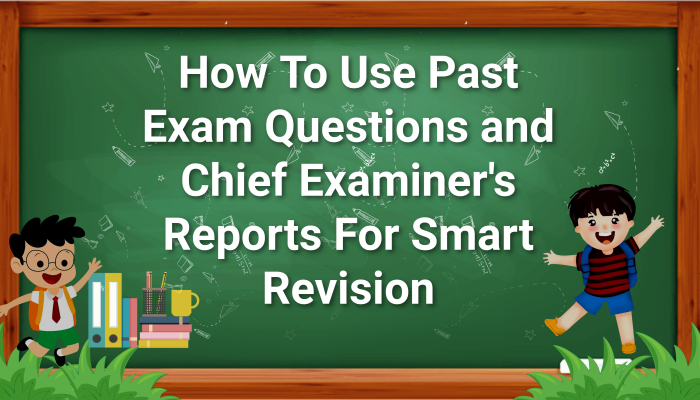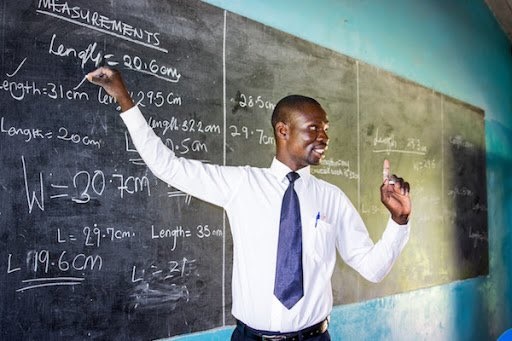How To Use Past Exam Questions and Chief Examiner’s Reports For Smart Revision

To Help Learners and Teachers Master Their Materials For Exam Success, There Is The Need For A Comprehensive Guide for Students and Teachers on How To Leverage Past Exam Questions and Chief Examiner’s Reports. This will help learners get super ready for the exam. This article explains how to do these and also provide Ten Smart Revision Tips.
Preparation for exams can be a challenging task for students and teachers. One of the best ways to increase exam readiness is by using questions from previous exams and examiner reports. These features are invaluable because they provide information on how exams are structured and what teachers and examiners expect from students. By learning from the past, students can improve their performance and become more confident in their knowledge.
The questions from previous exams are a window for style and the types of questions that can appear in future exams. By practicing with these questions, students can become familiar with the format and better understand what is being asked. This practice can significantly reduce anxiety when facing real exams because students feel more prepared. In addition, these questions usually highlight topics that are often covered, allowing students to focus their study efforts on what matters most.
The main examiner’s reports serve another essential purpose. They give feedback on how students performed on previous exams. These reports usually point out common mistakes that students make, which helps current students avoid the same traps. For example, if many students lose points because they do not follow the instructions carefully, future students can take this advice seriously as they practice. By understanding the mistakes of others, students can develop strategies to avoid them, leading to better test results.
Ten Smart Tips for Effective Exam Preparation
In this article, we will explore ten smart review tips that can help students and teachers effectively use previous exam questions and examiner reports. These tips will provide a structured approach to integrate these resources into study habits.
The first tip is to start by analyzing the main examiner’s reports to identify common errors and often tested topics. The second tip focuses on the creation of a study schedule that includes time to work on questions from previous exams. The third tip suggests grouping similar questions to create better understanding and recall of related topics.
The fourth tip is to practice answering questions passed under timed conditions, simulating the real exam environment. Quinta Tip encourages review with a study group, allowing students to share information from the examiner’s reports.
The sixth tip focuses on reflecting on incorrect responses to practical exams to learn from errors. The seventh tip advises to make notes or memory cards based on previous questions to reinforce learning.
The eighth tip emphasizes the importance of mixing different subjects while studying to maintain engagement. Ninth tip encourages regular feedback from teachers or colleagues after answering previous exam questions.
Finally, the tenth tip involves continually evaluating progress and adjusting study plans based on what works best.
By incorporating these tips and using the questions from previous exams and examiner reports, students and teachers can work together to create a more effective exam preparation process.
Understanding standards and expectations in exams can lead to better results and a smoother study experience in general. These resources not only help students prepare, but also guide teachers in their instructions, making them essential tools in the world of education.
Ten smart review tips students and teachers can use to make the most of these valuable features.
The use of questions from previous exams and examiner reports can significantly improve student exams. Here are ten smart review tips students and teachers can use to make the most of these valuable features.
First, creating a review schedule is essential.
Students must take regular time to focus on previous exam questions and how to solve them. A structured plan helps ensure that each subject is properly covered. Teachers can help by by recommending specific documents or questions that align with topics that students fight the most.
Second, it is crucial to analyze patterns in topics and questions from previous exams.
By reviewing these standards, students can identify which areas are often tested. This knowledge allows them to prioritize their studies on topics most likely to appear on future exams. Teachers can help students recognize these standards in the classroom.
Third, reviewing the feedback from the examiner’s chief reports is another vital strategy.
These reports provide information on the common errors that students make and highlight the points -chave points that examiners are looking for in the answers. Students should take time to read these reports carefully and adapt their study techniques accordingly. Teachers can facilitate discussions about this feedback, ensuring that students understand their importance.
Practicing under timed conditions is the fourth tip.
Time management is crucial during the exams, so that students should replicate the conditions of the exam when practicing past questions. Not only does this help students feel more comfortable with time, but also helps to reduce examination anxiety. Teachers can hold timed practice sessions in the classroom to support this.
READ: How To Use The New 2025 BECE Timetable For Crafting Tailored Study Strategies
Fifth, study of study groups can improve learning through collaboration.
Students benefit from discussing the questions from previous exams and sharing different approaches to answer them. This not only creates understanding, but it can also be quite motivating. Teachers can facilitate these groups, guiding discussions and ensuring that they remain focused and effective.
The sixth tip is to evaluate understanding through simulated tests.
Doing simulated-length exams using previous documents helps students evaluate their readiness. This gives them a clear idea of where they are and what areas need the most attention. Teachers can organise these simulated exams and provide constructive feedback on student performance later.
Seventh, students should focus on the marking schemes provided with previous questions.
Understanding how the answers are classified helps students better adapt their answers. Teachers can explain the marking criteria in detail, helping students learn to maximize their scores by aligning their answers with these standards.
Eighth, students should be in the habit of summarising answers to previous exam questions.
Writing short and clear answers helps reinforce knowledge. It also makes the review more interactive and engaging. Teachers can encourage this practice by giving summary tasks related to previous exam questions.
The ninth, using flashcards is an intelligent way to remember concepts and terms -chave.
Students can create flash memory cards for topics or tough terms that appeared in previous questions. Teachers can organize flash card games or tests to make this learning method more pleasant.
Finally, the tenth tip involves reflecting on learning.
After completing previous documents, students should take time to think about which strategies worked and what didn’t work. This reflective process increases self -awareness and helps students adapt their study methods in the future. Teachers can guide students in this reflection, emphasizing the importance of continuous improvement.
READ: Mastering Exam Success: 9 Effective Revision and Learning Strategies for Optimal Student Preparation
By employing these intelligent review tips, students and teachers can create a structured and effective approach to examination preparation, using reports from previous articles and the main examiners to improve learning and increase confidence. He defends ease and active learning, leading to better performance in exams.





 Free SHS: GES sets 2027 to end double-track system in public SHSs
Free SHS: GES sets 2027 to end double-track system in public SHSs  CHASS calls on govt to move SHSs from prepaid meters to postpaid meters
CHASS calls on govt to move SHSs from prepaid meters to postpaid meters  MoE arrests 3 persons over bribery, manipulation of school placement system
MoE arrests 3 persons over bribery, manipulation of school placement system  Govt approves GHC1billion to pay unpaid teachers, nurses salaries
Govt approves GHC1billion to pay unpaid teachers, nurses salaries